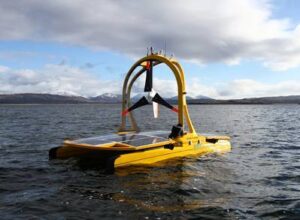Autonomous systems offer incredible value in many fields of engineering. These vehicles can go places and carry out tasks that humans cannot, opening the door for a new age in engineering which previously was out of reach.
For example, the U.S. Department of Defense is rapidly investing in the development of autonomous technologies to support the warfighter. As described in the U.S. Army’s official stance towards the use of autonomous systems, their benefit is clear: they can be used in dangerous situations where the loss of human life is a concern. Furthermore, certain mundane and computationally intensive tasks (such as analyzing data about the enemy’s position and movements) should be automated to reduce the chance of human error and free up military personnel to perform other duties [1].
The benefit of transferring certain responsibilities from humans to machines can also be seen in other areas. Self-driving cars for instance, have the potential to drastically alter transportation systems, especially in urban areas. Two key benefits of self-driving cars are their ability to optimize routes (thus reducing traffic, travel cost, and ecological footprint [2]) and safety considerations. Evidence has shown that self-driving cars have the potential to be safer than humans. Waymo, an autonomous driving technology company, released a report after their first million miles driven which demonstrated the infrequency of crashes, especially those likely to result in fatalities (most were minor collisions caused by human drivers) [3]. Much like in the context of the military, an important reality is clear: autonomous systems offer the potential to save lives.
Furthermore, autonomous systems are being developed in the maritime domain. These vehicles have the potential to aid in environmental monitoring efforts, primary as a data gathering tool. Following the oil spill in the Gulf of Mexico in 2010, ASVs were deployed to monitor marine mammal populations near the disaster site. Automating this process allows for a greater range to be covered in a quicker timespan, increasing the efficiency of these crucial monitoring tasks. Similarly, the National Oceanography Centre’s Marine Autonomous Systems in Support of Marine Observations (MASSMO) expedition has made use of ASVs to aid in environmental data collection. Certain techniques, such as passive acoustic monitoring, require low vehicle noise in order to preserve data integrity. Small ASVs offer a much lower noise signature compared to traditional human operated marine vehicles, making them ideal candidates for these types of tasks. In 2017, the National Oceanography Centre deployed a fleet of ASVs in the North Atlantic Ocean. These vehicles were able to collect important data on ocean temperature, salinity, tidal currents, plankton abundance, weather, and wave conditions, and were also able to identify several species of marine mammals by reading and analyzing sound waves [4].

Most recently in July of 2023, the U.S. Geological Survey implemented both an autonomous surface vehicle and a long range autonomous underwater vehicle on Lake Erie to help the fishing industry that is prominent on the lake. This benefits them as the old diesel-powered methods are loud and produce noisy data around the surface and near the bottom of the lake. The development of the quieter, solar powered, autonomous surface vehicle will increase the accuracy of fish locating. It also helps the wildlife population, as the surface vehicle can monitor the impact of algal blooms and changing water temperatures of various species of fish. These vehicles are helping Lake Erie maintain a thriving ecosystem [5].

It is clear that unmanned systems offer significant benefits in a variety of applications and are here to stay. Across the government, industry, and research sectors, scientists will continue to invest in autonomous robotics technology and rely on increasing automation. Our work on RoboBoat allows us to offer our own contributions to a project will real-world importance.